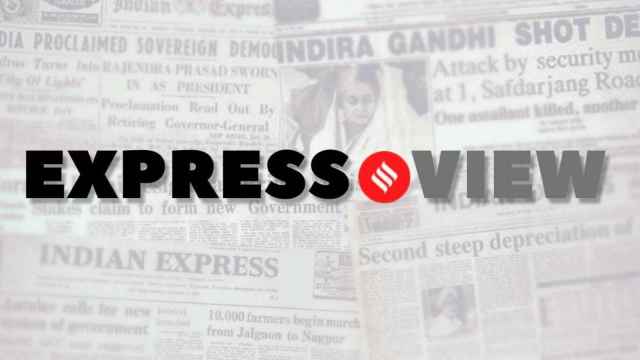
THE NARENDRA MODI government’s interim budget for 2024-25 is a vision statement for the next 25 years — the so-called Amrit Kaal — that will lead to Viksit Bharat, or to India becoming a developed country, by 2047. What it also seems to underline, arguably, is the ruling party’s confidence in its own prospects of coming back to power in the April-May national elections. One indication of this is — no new welfare schemes or income tax giveaways.
This is in contrast to the last interim budget for 2019-20 which saw the launch of the Pradhan Mantri Kisan Samman Nidhi (PM-Kisan) programme, delivering direct income support of Rs 6,000 per year to all farm households in the country. In fact, the scheme was implemented with retrospective effect from December 2018, thereby translating into a huge pre-election sop. Also, the tax liability on individuals with annual income of up to Rs 5 lakh was completely waived off, along with an increase in the standard deduction for salaried persons. This interim budget, by contrast, has not witnessed any increase in the PM-Kisan transfer — there was wide expectation of its going up to Rs 9,000 per year — or any tinkering with income tax rates or slabs.
A POSITIVE offshoot of the apparent political confidence is the Modi government’s renewed emphasis on fiscal consolidation. Not only has the Centre’s gross fiscal deficit in the revised estimates for 2023-24 fallen below the budget target, both in absolute terms (from Rs 17,86,816 crore to Rs 17,34,773 crore) and relative to GDP (5.9 to 5.8 per cent), it is expected to decline even more sharply to 5.1 per cent in the coming fiscal year. More encouragingly, this is coming largely from a cut in the revenue deficit — from 3.9 per cent in 2022-23 to 2.8 per cent in the revised estimates (RE) for 2023-24, and to a budgeted 2 per cent in 2024-25.
On the other hand, the Centre’s capital expenditure, which rose by 28.4 per cent in 2023-24 (RE), is budgeted to grow further by 16.9 per cent in 2024-25. This focus on the quantum as well as quality of fiscal consolidation — redirecting spending away from subsidies and other current outlays towards asset-creating capital expenditure — is welcome. It is especially so, ahead of elections.
Finance Minister Nirmala Sitharaman reiterating the government’s commitment to achieving a fiscal deficit of less than 4.5 per cent of GDP by 2025-26, signals two things. First, the Indian economy’s normal growth trajectory has returned, so much so that the government feels less pressure to borrow and stimulate or provide extraordinary support to those worst impacted by pandemic-induced disruptions. Second, the impetus to growth is expected to henceforth come from the private sector. Lower government borrowings — yields on the benchmark 10-year-bond eased by nearly 0.1 percentage points on Thursday — will release more resources for private corporates to invest. Macroeconomic stability — be it government finances, external sector balance or corporate and bank balance sheets — along with a government with a decisive majority, could create conditions conducive for a much-overdue revival of private investment.
THERE ARE four primary drivers of economic growth: Private consumption, private investment, exports and government expenditure. Currently, only the last engine is firing, while the other three are sputtering. The expansion in government spending, especially in the last three years, hasn’t really crowded in private investment as per the conventional Keynesian prescription. India Inc, to quote Sitharaman, is like Hanuman hesitating to fly — in other words, invest. Without that, there can be no sustained formal job creation leading to higher incomes and consumption.
The two sectors that did well even amid the pandemic were IT services and start-ups. The five big IT majors — TCS, Infosys, Wipro, HCL and Tech Mahindra — alone registered a jump in their total employee headcount from 11.5 lakh in March 2020 to over 16 lakh in September 2022, on the back of increased digitisation even from businesses that were traditionally based more on physical contact. But the latest data for December 2023 shows their combined headcount falling to just 15.4 lakh.
It has been worse in the case of start-ups, which are facing a funding winter following the drying up of easy money from ultra-low global interest rates. Generating jobs for the Amrit Peedhi — leveraging the demographic dividend that a young and growing workforce is supposed to bring — is going to be the single biggest policy and political challenge in Amrit Kaal. For that, Hanuman must fly.